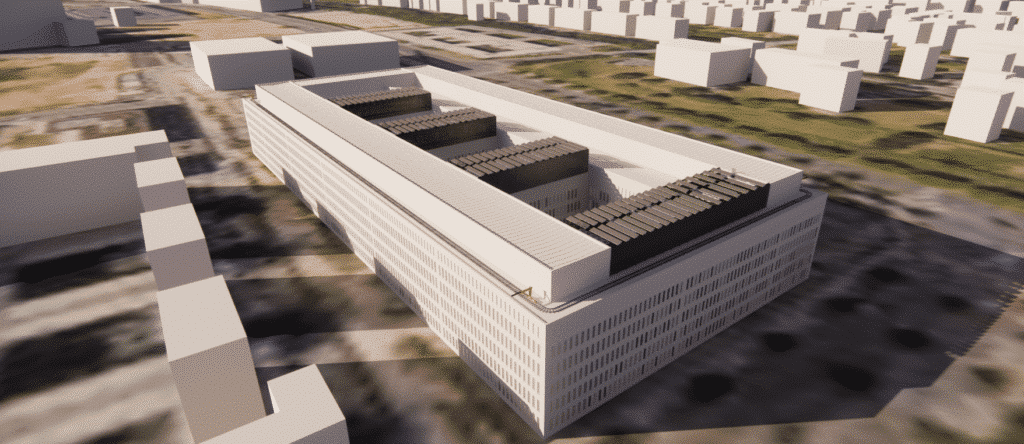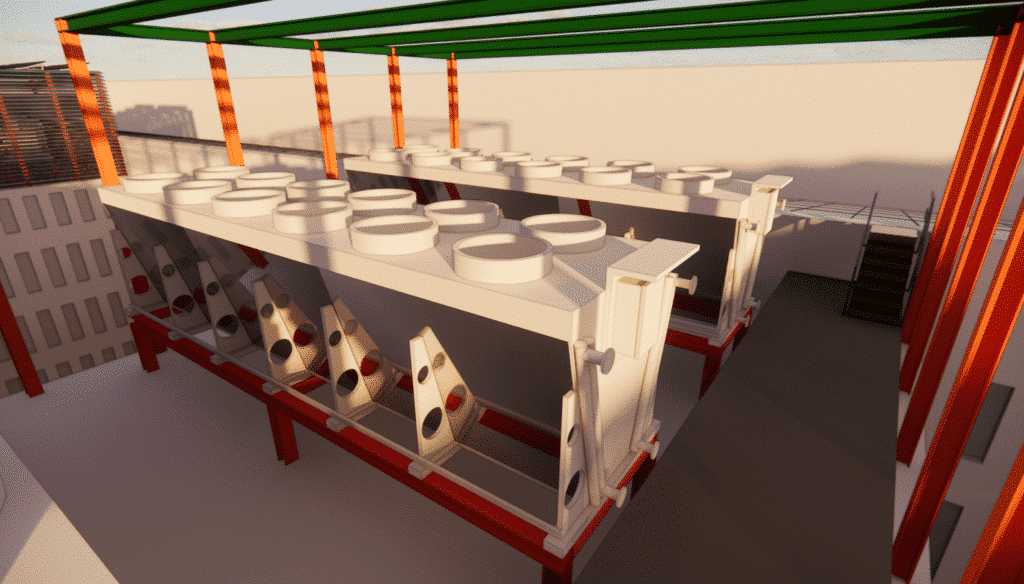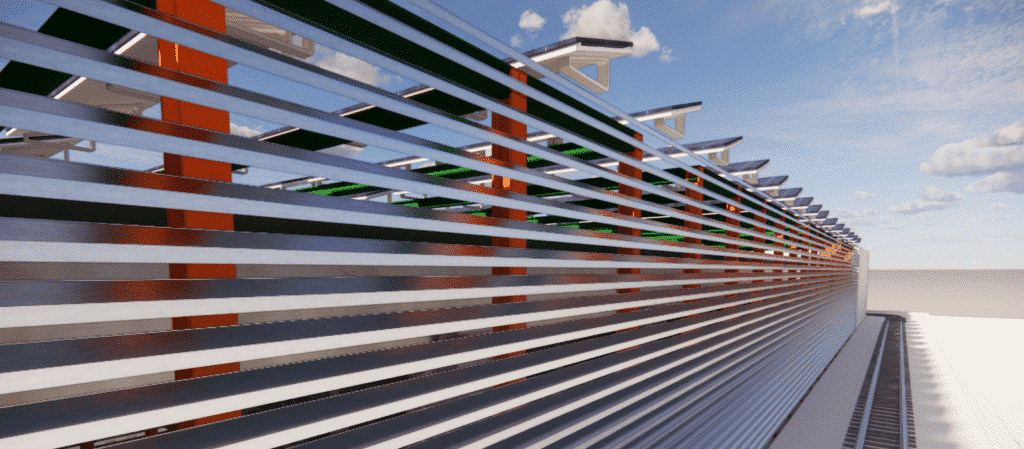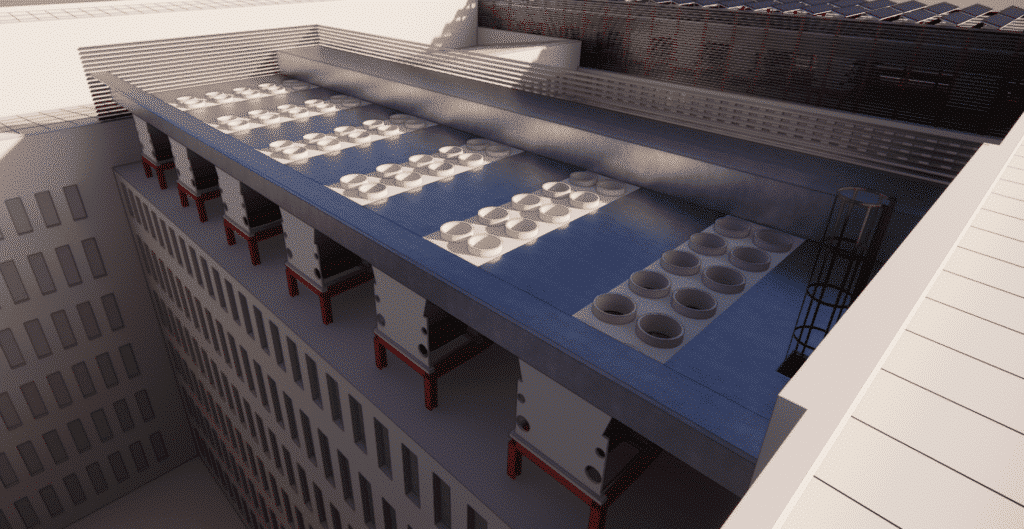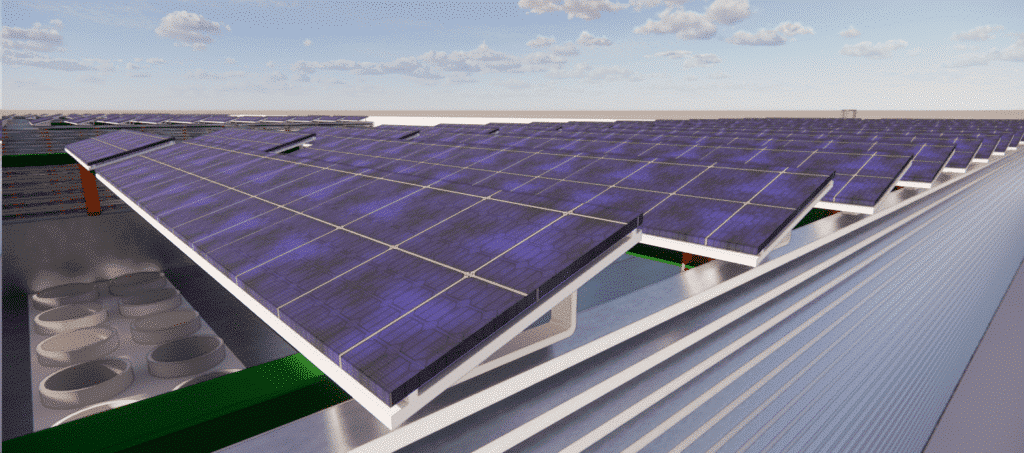Overheating risk analysis - Air coolers
EOLIOS ingénierie brought its technical expertise in the understanding and the modeling of the thermal and aeraulic exchanges of an office building in Luxembourg.
Air coolers - Critical study - heat wave
Year
2023
Customer
Location
Luxembourg
Typology
Air & Wind
Continue browsing :
Our other projects :
Latest news:
Description of the project
The objective of such a project is the control of the particular aeraulic phenomena induced by the presence of numerous beams, recirculation zones, as well as the evaluation of the different optimization criteria in order to have the highest wind potential inside the building.
The CFD studies allowed to visualize the different aeraulic phenomena for different wind orientations, which allowed the optimization of the geometry in order to have the best possible performance of the wind turbine.
What is an air cooler?
An air cooler is a device that cools air by passing it through a cooling system that includes evaporators, condensers and fans. The cold air is then diffused into the space by means of ducts. Air coolers are generally used to cool large indoor spaces, such as factories, stores or hotels, in our case, it is in large office center.
Vents
What is a metal windbreak?
A metal windbreak is a device that is designed to reduce noise and vibration generated by the wind. It is typically designed to be installed on the outside of walls or windows and consists of a hollow metal frame with a metal veil wrapped around it.
The aeraulic mask created by the louvers was modeled in order to take into account their impact on the air trajectory.
Partitioning panels and baffle development
The partition panels are installed to avoid the looping effects that can occur between air coolers. These panels are positioned at the top of the systems so as not to obstruct the heat exchangers on either side of the systems.
These panels are present along the entire length of the system, not giving rise to a vertical airflow between the outlet and inlet of the systems.
Consideration of the impact of solar panels on airflow
The different aeraulic masks created by the solar panels were modeled in order to take into account their impacts on the air trajectory.
Simulation of temperatures in extreme conditions
Study of thermal plumes
The study of thermal plumes allows us to study the risks of disturbance of certain systems by the calorific releases of other systems.
Simulation of temperatures in extreme conditions
The EOLIOS engineers were able to identify the previous looping which is mainly due to the lack of fresh air supply close to the systems. Indeed, the presence of the courtyards totally closed does not allow a sufficient renewal of air. The air sucked in by the systems must therefore be taken from the upper part, corresponding to the heat release zone. This air suction from the fans’ discharge causes a rise in the temperature of the air sucked in by the 3 fans on the looping side.
Moreover, the results show a lower rise in temperature in zone B, of the order of 38°C, i.e. +3°C compared to the outside temperature. This temperature rise is less significant due to the different alignment of the machines in the process zone.

